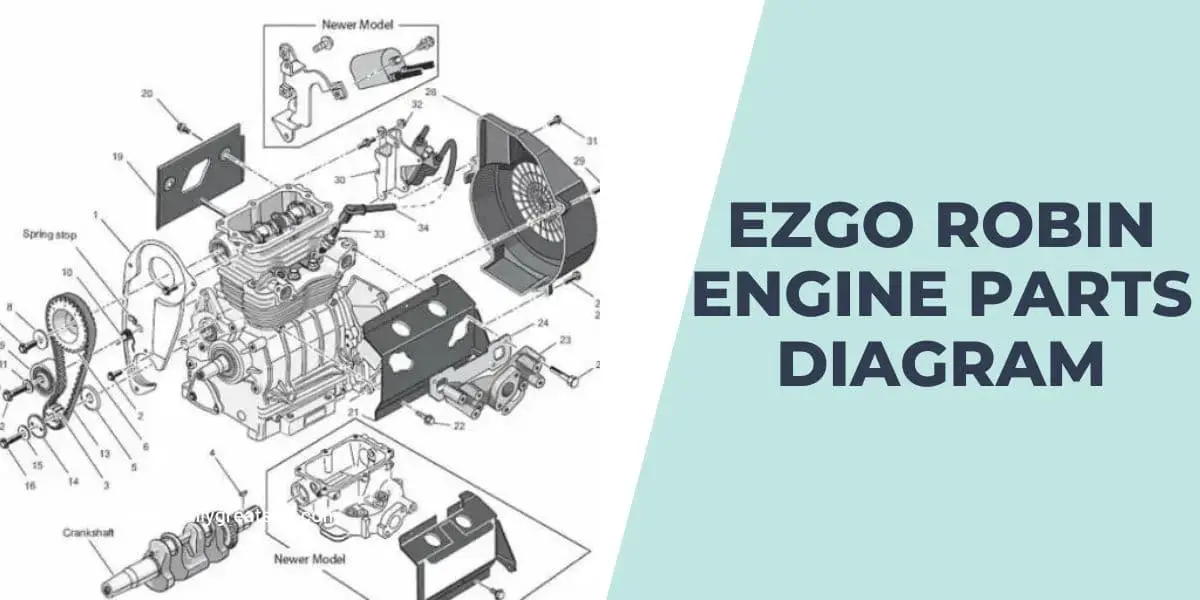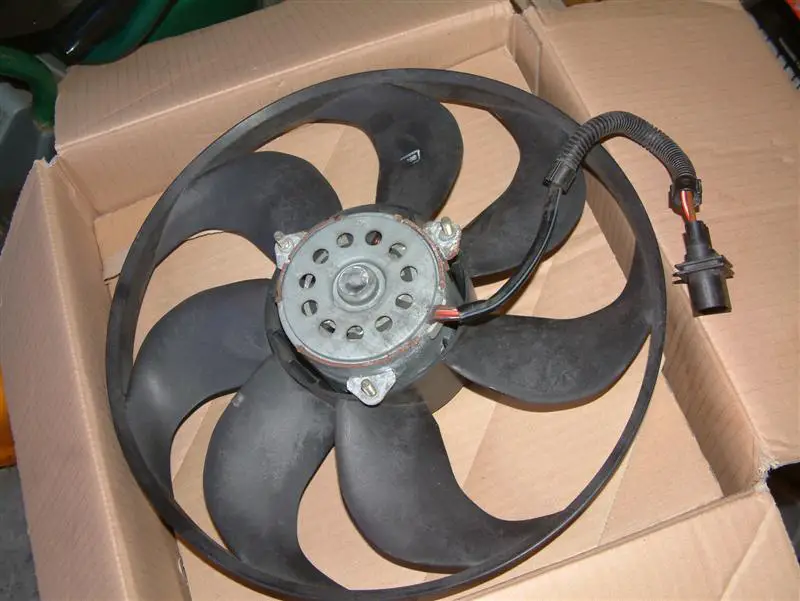I can’t tell you how excited I am to be diving into the intricacies of the EZGO Robin Engine today.
Trust me, I’ve spent countless hours under the hood, muddling through parts, trying to figure out this engine.
So, pull up a chair, and let’s understand the EZGO Robin engine parts diagram together.
EZGO Robin Engine Parts Diagram
This is the EZGO Robin engine parts diagram:

Before we go too deep into the engine parts diagram, it might be helpful for some of you to check out our previous post on EZGO Engine Replacement, especially if you’re considering a complete engine overhaul.
Understanding the EZGO Robin Engine Diagram
An EZGO Robin engine parts diagram is a visual representation or illustration that displays the various components and parts of an EZGO Robin engine. It typically includes labeled diagrams of the engine’s major components, such as the cylinder head, piston, crankshaft, valves, carburetor, ignition system, fuel system, and exhaust system.
The diagram helps users identify and understand the different parts of the engine, their arrangement, and how they interact with each other. This information can be useful for troubleshooting, maintenance, and repairs of the engine.
And if you thought this was exciting, wait until we dive deeper into the blueprint of the power itself. Don’t miss out on our comprehensive guide to the EZGO 2 Cycle Engine Diagram, which takes you step by step through the heart of this mechanical beast!
Components of The EZGO Robin Engine Diagram
These are the Components of the EZGO Robin Engine Diagram:
- Cylinder Head: The cylinder head houses the combustion chamber, valves, and spark plug. It seals the top of the engine’s cylinders.
- Piston: The piston is a cylindrical component that moves up and down within the engine cylinder, driven by the force of the expanding gases. It transfers energy from the combustion process to the crankshaft.
- Crankshaft: The crankshaft converts the up-and-down motion of the piston into rotary motion. It is connected to the piston via the connecting rod and transfers power to the drivetrain.
- Valves: The valves control the flow of air and fuel into the combustion chamber and the exhaust gases out of the engine. The intake valve lets the air-fuel mixture in, while the exhaust valve allows the burned gases to exit.
- Carburetor: The carburetor mixes air and fuel in the correct proportions before delivering it to the combustion chamber for ignition. It ensures the engine runs smoothly and efficiently.
- Ignition System: The ignition system generates a high voltage spark at the spark plug to ignite the air fuel mixture in the combustion chamber. It typically consists of components such as the ignition coil, distributor, and spark plug wires.
- Fuel System: The fuel system supplies the engine with fuel. It includes components like the fuel tank, fuel pump or fuel injector, fuel filter, and fuel lines.
- Exhaust System: The exhaust system carries the burned gases out of the engine. It typically comprises an exhaust manifold, catalytic converter (if equipped), muffler, and exhaust pipe.
For a detailed breakdown of the EZGO 2 Cycle Engine, check out our comprehensive EZGO 2 Cycle Engine Diagram.
How to Troubleshoot Common Issues Using the EZGO Robin Engine Diagram
Follow these steps to troubleshoot Common Issues Using the EZGO Robin Engine Diagram:
- Identify the issue: Determine the specific problem you are experiencing with the engine. It could be related to starting, poor performance, unusual noises, or other symptoms.
- Refer to the diagram: Use the EZGO Robin engine diagram to locate the relevant components associated with the issue you’re facing. This will help you understand the engine’s layout and the interaction between different parts.
- Inspect and check connections: Visually inspect the components and their connections for any signs of damage, looseness, or corrosion. Ensure that all connections, such as spark plug wires, fuel lines, and electrical connections, are secure and properly connected.
- Check fuel and air systems: Examine the fuel system components, such as the fuel filter, fuel pump, and carburetor (if applicable), for clogs or blockages. Ensure the air filter is clean and not obstructed, allowing proper air intake.
- Review ignition system: Verify the condition of the ignition system components, including the spark plug, ignition coil, and distributor (if applicable). Check for proper spark plug gaps, signs of fouling, or worn-out ignition components.
- Consult the engine manual: Refer to the specific engine manual for troubleshooting guidelines and diagnostic procedures provided by EZGO Robin. The manual may offer detailed instructions based on the engine model and problem you’re encountering.
- Seek professional assistance: If the issue persists or if you’re unsure about performing further troubleshooting, it’s recommended to seek assistance from a qualified technician who specializes in EZGO Robin engines. They will have the expertise to diagnose and address the problem accurately.
If you’re looking for guidance on EZGO solenoid wiring, be sure to check out our comprehensive EZGO Solenoid Wiring Diagram for easy and hassle free connections.
FAQs on the EZGO Robin Engine Parts Diagram
These are the most frequently asked questions about the EZGO Robin Engine Parts Diagram:
Where can I find an EZGO Robin engine parts diagram?
You can find EZGO Robin engine parts diagrams in the engine’s user manual or service manual provided by EZGO. These manuals often include detailed illustrations and diagrams for reference.
Can I use the parts diagram to order replacement parts?
The parts diagram itself may not be suitable for ordering replacement parts directly. However, you can use the diagram as a reference to identify the specific part you need and then contact an authorized EZGO dealer or parts supplier to purchase the required replacement.
Are all EZGO Robin engines the same?
EZGO Robin engines may vary in terms of specific components and configurations depending on the model, year of manufacture, and other factors. It’s important to refer to the appropriate engine manual or diagram specific to your EZGO Robin engine model.
What if I can’t find a specific part on the diagram?
If you can’t find a specific part on the diagram, it’s possible that it may not be labeled or included in the diagram. In such cases, referring to the engine manual or contacting EZGO directly for assistance would be the best course of action.
While we’re deep into the nitty-gritty of the EZGO Robin Engine, you might find our comprehensive EZGO RXV troubleshooting guide a valuable sidekick to handle any bumps on your maintenance journey.
Conclusion
The EZGO Robin Engine Parts Diagram gives a deeper understanding of how this engine operates and how its various parts work in harmony. Whether you’re a seasoned mechanic or a passionate DIY enthusiast, this diagram serves as a valuable resource for maintaining and troubleshooting your EZGO Robin Engine.
Remember, knowledge is power, and with this diagram, you’ll be well equipped to tackle any engine related challenges that come your way. Keep exploring, keep learning, and keep that engine running smoothly!



